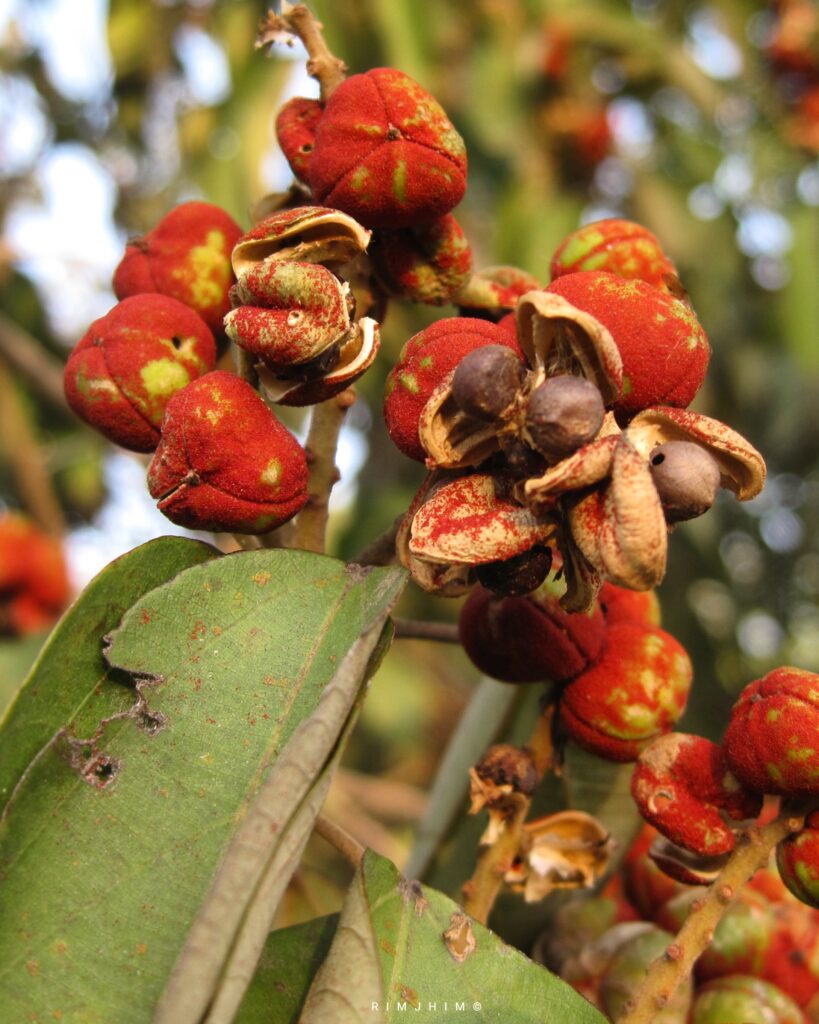Kamala Tree (pronounced kaamlaa) is a tree found throughout India. It has been in use as medicinal tree in India for ages. The tree can grow up to 10 m tall. Alternately arranged, ovate or rhombic ovate leaves are rusty-velvety. Male and female flowers occur in different trees. Female flowers are borne in lax spike like racemes at the end of branches or in leaf axils. Male flowers occur three together in the axils of small bracts. Capsule is trigonous-globular, covered with a bright crimson layer of minute, easily detachable reddish powder. Kamala is supposed to be a very useful tree. It is source of Kamala dye which is used in colouring silk and wool. It is used as anti-oxidant for ghee and vegetable oils. Oil is used as hair-fixer and added in ointment. Seed oil is used in paints and varnishes. Seed cake is used as manure.
Medicinal uses: According to Ayurveda, leaves are bitter, cooling and appetizer. Fruit is heating, Purgative, anthelmintic, vulnerary, detergent, maturant, carminative, alexiteric and useful in treatment of bronchitis, abdominal diseases, spleen enlargement etc
Description
Global Distribution
India: Andaman & Nicobar Island, Andhra Pradesh, Assam, Kerala, Madhya Pradesh, Odisha, Rajasthan, Tamil Nadu
Local Distribution
Throughout Assam
Uses and Management
Uses
System Of Medicines Used In
Ayurveda, Homoeopathy, Folk medicine, Unani, Siddha
The capsules are a chief source for the extraction of orange dye (Kamela). The wood is used as fuel. The fruit and leaves are used in numerous herbal preparations.

Leave a Reply